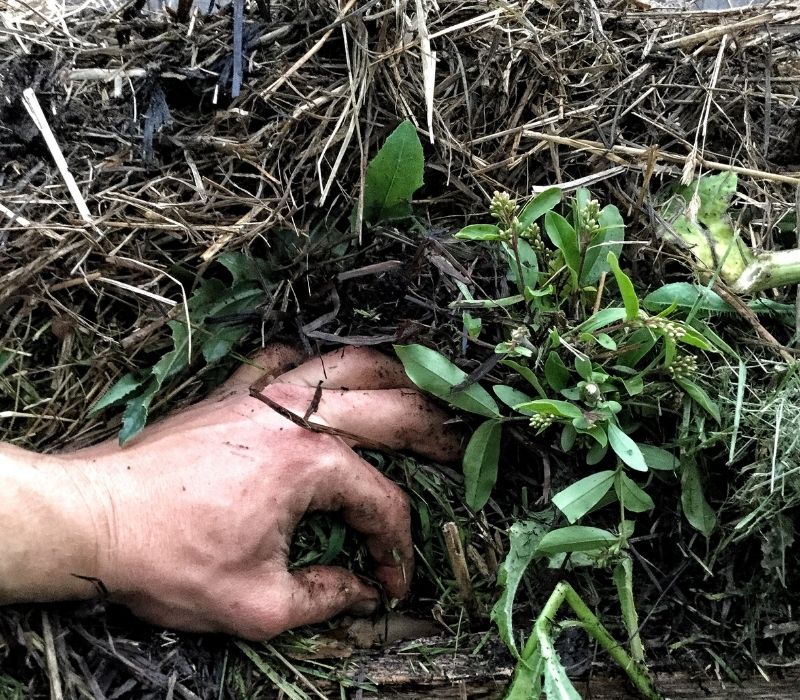Are you wondering what to do with fall leaves? Be glad as they are like free loads of treasure strewn all over your yard.
Here are some things you can do with these organic gold.
RELATED: 17 Fall Decorations To Dress Up Your Home For The Season
11 Clever Tips on What to Do With Fall Leaves This Autumn
1. Make a Playground for Your Kids

A little fun wouldn't hurt whether or not you have kids. Rake the leaves in your compound into several piles, and let your children and yourself jump on the leaves.
Tips
- If you're a gardener, pile the leaves in an area where you can leave them to compost for your spring garden. Your backyard will do.
2. Decorate Your Homestead

Fall leaves and pumpkins are trademarks of autumn, and they make the perfect homestead decorations. Get into the season's mood with a colorful leaves garland on your porch or a dried fall leaves wreath on your door.
Take your artistry a notch higher by ironing the prettiest leaves between waxed paper sheets, mount on matboards, and frame to enjoy all year round.
3. Lawn Nutrients

Sometimes the easiest way to handle fallen leaves is to leave them where they are, especially if they add value to the area. To prevent the leaves from forming a dense mat as they decompose, pass your lawnmower over the leaves three to four times to cut them into small bits.
Because they are small, they decompose in no time. These will feed microbes and eventually feed your lawn for healthy greenery.
4. Make Mulch

Fall leaves are rich in various trace elements, micro-, and macronutrients, which make them ideal not only for mulching but also for stabilizing the soil's temperature and reducing weeds in your garden.
Shred the collected leaves with your lawnmower and dump the fragments on your kitchen garden. You can also use a string trimmer, especially if you collect the autumn leaves in a plastic can.
5. Make a Compost Pile

As an established homesteader, you certainly have a compost bin in your garden. Rake and dump the leaves into your compost bin, where they will stay undisturbed until spring.
Tip: Choose a spot in your backyard that you do not use and pile the leaves there if you do not have a compost bin.
RELATED: Fall Prevention Checklist: Preparing Your Home For Fall
6. Prepare Your Spring Garden

Why dispose of fall leaves when you can start preparing your spring garden as early as now? Dig eight to twelve inches deep in your raised bed gardens and amend the soil using fall leaves.
You can also spread the leaves on the surface of your raised bed, and slightly chop them up with a spade or fork so that they are all in contact with the soil. This will encourage worms and other organisms that will eventually enrich your raised bed by next spring.
Tip: Repeat this after the first batch of leaves decomposes until the first frost.
7. Set up Your Worm Bin

While most worm bin setups require you to use shredded newspaper as bedding for your worms, you can also start up a worm bin with a dry leaves bedding for more a natural habitat. A combination of dry fall leaves and shredded newspaper also works for worms, hence more worm castings.
8. Save the Leaves for Composting in Summer

Fill several black plastic bags with dry fall leaves and leave them undisturbed next to your compost bin. When you have a lot of nitrogen-rich green material during summer, you can add a few handfuls of carbon-rich brown leaves into the compost pile.
This compost technique requires you to have three parts of brown material for one part of nitrogen-rich green material. Therefore, for every gallon bucket of grass clippings and kitchen scraps, add three-gallon buckets of leaves.
9. Build Your Regenerative Garden

Regenerative farming is a technique that encourages zero ground tilling to rebuild soil organic matter and restore degraded soil.
Alternately layer fall leaves with straw, shredded newspaper, cardboard, untreated grass clipping, kitchen scraps, and other organic material for a ready regenerative garden in spring. This is also called lasagna gardening.
10. Insulate Shrubs

If you have plants that do not tolerate frost, insulating them is their best chance to survive the winter. Pack fall leaves in plastic bags and store them away until winter.
Build a metal, clothe or mesh cage around your shrubs or other tender plants, and add dried fall leaves around the encaged plants.
Tip: This will only be effective in zones that are cold but not wet since damp leaves will cause your shrubs to rot.
11. Make a Scarecrow

Halloween is around the corner and what better to keep your kids busy than with a scarecrow project. It's not too early to start preparing. Stuff old clothes with dry leaves and place them on your front porch for Halloween.
Tip: After Halloween, you can put the scarecrow on a pole in your garden to scare away birds.
Watch this video by Lori Allred on Inspired by Pinterest: Crafting with Fall Leaves
There you go, homesteaders. Autumn leaves can be overwhelming, but with these smart tips, you can now embrace the season and use the versatile fall leaves to your advantage this year.
What other smart ways do you know to deal with fall leaves? Let us know in the comment section below!
Up Next:
- 11 Fall Vegetables You Should Start Planting Now
- Fall Prevention Checklist: Preparing Your Home For Fall
- 5 Tasty Sweet Potato Tots Recipes Perfect For Snack Time
Fellow homesteaders, do you want to help others learn from your journey by becoming one of our original contributors? Write for us!

Leave a Reply